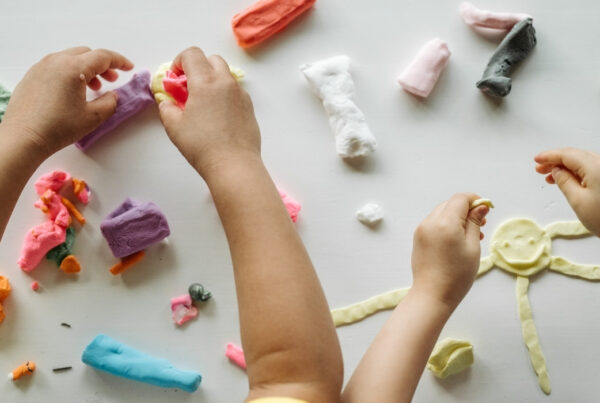Key Points:
- Autism texture sensitivity is a common sensory processing challenge for many children with autism.
- Parents can use practical strategies at home to help their child cope with texture aversions.
- Professional support, like ABA therapy, can address these sensitivities and improve daily life.
Sometimes mealtime feels like a battlefield, or getting dressed becomes a tearful struggle. Many parents wonder why their autistic child reacts so strongly to certain fabrics, foods, or sensations. Understanding autism texture sensitivity is the first step to helping your child feel more comfortable — and helping your home feel calmer.
What is Autism Texture Sensitivity, And Is It Common?
Yes, autism texture sensitivity is a frequent issue for children on the autism spectrum. Many kids with autism experience sensory processing differences, which means their brains handle information from the senses — including touch and texture — differently. This can cause strong discomfort or even pain from everyday sensations that others barely notice.
Texture sensitivity in autism can show up in many ways: refusing to wear certain clothes, gagging at certain food textures, or avoiding play activities that feel “weird” or overwhelming. Parents often notice their child has trouble with sticky, scratchy, slimy, or rough materials. This is not simply picky behavior — it is a real sensory processing difficulty that deserves understanding and support.
Why are Textures So Difficult For Some Kids With Autism?
Children with autism often have what professionals call sensory processing disorder or sensory integration difficulties. While some senses may seem under-responsive (they don’t notice a scraped knee, for example), others may be over-responsive. When the sense of touch (the tactile system) is overly sensitive, it can make textures feel unbearable.
For example:
- A scratchy sweater might feel like sandpaper on the skin.
- Mushy or lumpy foods may trigger a gag reflex.
- Bare feet on grass or sand might feel frightening or painful.
These reactions are not dramatic on purpose — the child’s nervous system truly perceives these sensations as much more intense or unpleasant than most people would.
5 Signs Of Autism Texture Sensitivity To Watch For
Parents often notice texture sensitivities during daily routines. Recognizing the signs can help you respond with empathy and find solutions. Look for these behaviors:
- Refusing to wear certain fabrics like wool, tags, or tight-fitting clothes.
- Walking on tiptoes to avoid certain floor textures.
- Gagging, spitting out, or refusing specific food textures like creamy, crunchy, or slimy foods.
- Avoiding arts and crafts materials such as glue, sand, or playdough.
- Meltdowns or withdrawal in situations with uncomfortable textures (e.g., at the beach or in messy play).
By observing these patterns, you can start identifying what triggers your child’s discomfort.
Practical Solutions For Managing Texture Sensitivity At Home
There are several ways to help your child manage texture sensitivities. With patience and consistent support, many children can learn to tolerate more textures over time. Try introducing changes gradually and respecting their boundaries when they feel overwhelmed.
Clothing and Fabric
Getting dressed can be stressful for a child sensitive to textures. To make it easier:
- Choose soft, seamless clothing made of cotton or other gentle materials.
- Remove tags from shirts and pants.
- Wash clothes several times to soften them before wearing.
- Allow the child to help choose clothing so they feel more in control.
Food Textures
Mealtimes can be particularly challenging if a child is sensitive to certain food textures. To help:
- Introduce new foods one at a time in very small amounts alongside familiar favorites.
- Experiment with different ways of preparing the same food (e.g., roasted carrots vs. boiled).
- Allow your child to help prepare food so they can explore textures at their own pace.
- Don’t force them to eat — encourage but respect their limits.
Play and Sensory Activities
Some kids avoid messy play because of texture discomfort. To make playtime enjoyable:
- Start with dry textures (like rice or beans) before moving to wet or sticky materials.
- Offer tools (spoons, gloves) so they can participate without direct contact.
- Encourage water play, which is often less overwhelming and still provides tactile input.
 When To Seek Professional Help
When To Seek Professional Help
While many children improve with home strategies, sometimes the sensitivity is so intense that it interferes with daily life. If your child struggles to eat a balanced diet, attend school comfortably, or engage in play and social activities, it may be time to seek professional guidance.
Occupational therapists can provide sensory integration therapy to help desensitize children and teach coping strategies. Applied Behavior Analysis (ABA) therapy can also support children in learning to tolerate textures while reinforcing positive behaviors.
How ABA Therapy Can Help With Texture Sensitivity
Texture sensitivities can feel frustrating for both children and parents, but empathy goes a long way. Help your child feel understood by acknowledging their feelings and letting them know it’s okay to feel uncomfortable. Avoid punishing or shaming them for their reactions, and instead, celebrate small successes when they try new textures or tolerate discomfort even briefly.
ABA therapy is widely recognized as an effective way to help children with autism learn skills, reduce challenging behaviors, and tolerate uncomfortable sensations — including textures. An ABA therapist can break down the process into small, manageable steps, reward progress, and teach coping mechanisms.
For example:
- Gradually exposing the child to new textures in a controlled way.
- Teaching replacement behaviors for avoidance or meltdowns.
- Reinforcing positive interactions with food, clothing, and play materials.
ABA therapy is tailored to the child’s individual needs, which makes it a powerful tool for tackling texture-related challenges alongside other developmental goals.
Ready To Help Your Child Thrive? Contact Crown ABA Today!
If your child struggles with autism and texture sensitivity, professional support can make a big difference. At Crown ABA, we specialize in ABA therapy in Maryland, helping children develop skills and overcome challenges like texture sensitivity in a compassionate, evidence-based way.
Our team works with families to create a personalized plan that meets your child’s needs — at home, in school, and in the community. Don’t let sensory challenges hold your child back from enjoying everyday life.
Reach out to us today to learn more about how ABA therapy can help your child thrive. We’re here to support you every step of the way!





